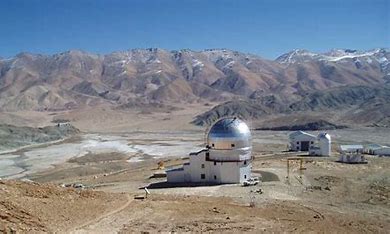India has reached new heights in space exploration by launching the world’s highest-altitude gamma ray telescope, MACE, at Hanle, Ladakh. Set at an altitude of 4,270 metres, this state-of-the-art telescope will help scientists uncover the mysteries of the universe.
A Major Step in Astronomy
The MACE (Major Atmospheric Cherenkov Experiment) telescope is the latest achievement by the Department of Atomic Energy (DAE). Developed by the Bhabha Atomic Research Centre (BARC) in Mumbai, it is the largest gamma ray telescope in Asia. With its high sensitivity, MACE will detect gamma rays from supernovae, pulsars, and black holes, offering insights into the most energetic processes in the cosmos.
Unique Location: Hanle, Ladakh
Hanle, with its pristine skies and low pollution, offers ideal conditions for astronomical observations. Dr. A.K. Mohanty, chairman of the Atomic Energy Commission, stated that this region is a “heaven” for gamma ray astronomers, and more telescopes could soon be added.
Peering Into the Universe’s Secrets
MACE is designed to study some of the universe’s most dramatic phenomena, such as exploding stars and black holes. It will also play a role in the search for dark matter, a mysterious substance believed to make up a significant portion of the universe.
Cutting-Edge Technology
The telescope, with a 21-metre diameter and weighing 175 tonnes, is an engineering marvel. It features 1,424 diamond-turned mirrors and over 1,000 photomultiplier tubes. Despite extreme weather conditions in Ladakh, MACE operates efficiently, even detecting gamma rays from 200 million light years away during a December 2022 observation.
India’s Pride on the Global Stage
As the world’s highest gamma ray telescope, MACE is set to become a focal point for global astronomers. Its success solidifies India’s standing in the world of space exploration, and as Dr. Annapurni Subramaniam noted, it is a true “engineering marvel.”
With MACE, India has taken a giant leap toward understanding the universe’s deepest mysteries, making this telescope a source of national pride.







